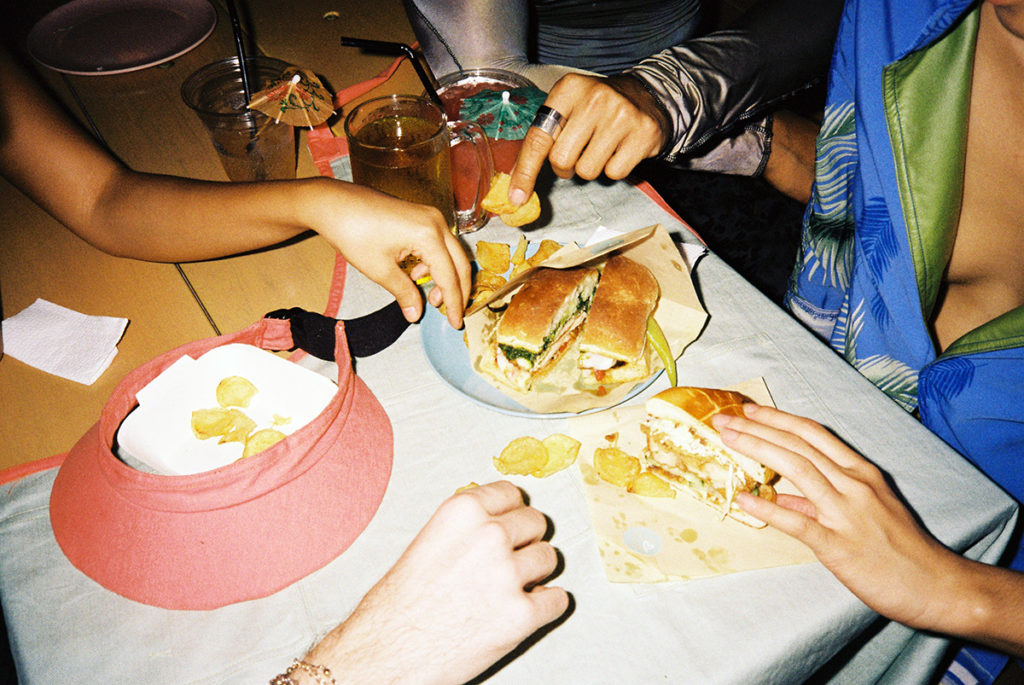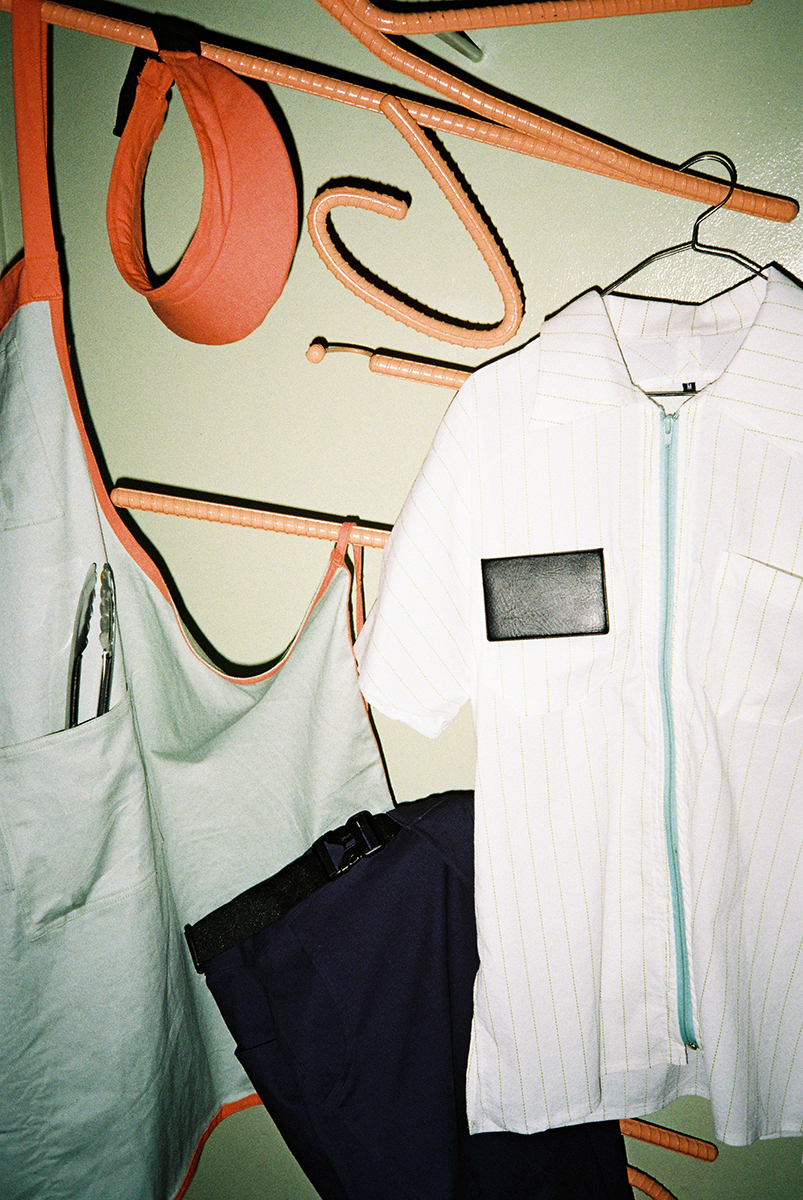The disconnect between food and fashion has long been disproven.
In 1992, Italian designers Domenico Dolce and Stefano Gabbana sent Naomi Campbell down their catwalk wearing a brassiere inscribed with the words “tomatoes, potatoes.” The Italian duo has since made pasta, gelato, and greengrocer-print dresses a staple of the summer wardrobe. Other fashion brands have since followed suit, with Italian luxury fashion house Fendi creating Fendi Cucine, a line of exquisite kitchen designs that include windowed wine refrigerators and kitchen islands reminiscent of a Fendi store.
There is also the spate of retail brand-helmed cafés that have been exploring the food and fashion connection, with industry monoliths like Bench diversifying into food. It’s a crossover that, at its worst, is likely to suffer from nascence—from not being able to deliver on the promise of potential. But its very existence may as well confirm that certain parallelisms exist between food and fashion, and that those similarities can indeed be explored.
“People work better when they feel good, look good, and know that their needs are being attended to. It is never mundane to be able to improve someone’s standard of living via the clothing they wear every day. In this way, it is always relevant for us to be designing: not only for the runway, but also for reality,” Aiala Rickard adds.
Lastly, there’s the case of the recent service uniform renaissance. A new fleet of well-dressed, stylish service staff has been making the rounds of certain publications. New York restaurants Le Coucou and Le Turtle are homes to tuxedoed and customized jumpsuit-clad waitstaff. The staff of Elizabeth Street Café in Austin can choose from a wide array of built-to-order, tropical-pattern dresses. A sommelier at Nix in New York alternates among five Marc Jacobs-designed, Czech textile-inspired dresses.
Has the connection between food and fashion been fully explored? Do the direct incorporations of food into fashion (and vice versa), clothing brand-helmed cafés, and stylish service uniforms fully cover the extent of that connection? Perhaps not, since more variations of such a relationship are surely yet to be derived.

There are, however, areas that can still be further explored that would benefit from a bit more attention. Take service uniforms, for instance. Arguably, this is the area of food and fashion crossover that requires the most attention by virtue of its necessity—yet the trend has only manifested itself in the West. Locally, there isn’t a service uniform revival to speak of, much less any signs pointing to an impending change.
Toqa, by Manila-based designers Isabel Sicat and Aiala Rickard, is out to redefine not just the high fashion ideal but also the aesthetics of everyday wear. The label marries sustainability with high fashion, using only rescued “deadstock” (fabrics which are no longer in production) for their creations.
Leaning heavily into ethical consumption and sustainability has always been excessively praised—owing to their relative rarity or simply because we have never not needed them—and Sicat and Rickard are quick to acknowledge the pointlessness of that reverence.


“At this point it should be a given that sustainability is integral to any company’s production methodology: to define sustainability as a ‘political stance’ is almost to dilute its value. It is very much a reflection of our own principles, a byproduct of who we are and how we exist in the world. So, of course we aim to be aware, minimize environmental impact, and promote an alternative method of production to the best of our abilities,” they said in an interview with Dansk.
It’s a project that’s less a commercial venture (or a political statement) than a way to challenge the contemporary fashion scene, which, as the pair rightly points out, almost exclusively caters to Western centers of fashion. Both hailing from the tropics (Sicat is from the Philippines and Rickard is from Hawaii), the two decided to anchor their creations on the idea of dispelling certain stereotypes about what it means to be a person from an island.
“The uniforms are sustainable as their textiles come from our rescued deadstock. There are nods to our Sport Resort aesthetic, signatures of sustainability, functionality and fun as well as smaller motifs—think of the visors, the buckle closures on the pants, and basic shirt silhouette, which is derived from patterns from our season one collection,” Isabel Sicat says.
One of their collaborations is reflective of just that—an ingenious riff on the classic foodservice uniform for sandwich shop Sidechick. The two connected with chef and owner Justin Golangco to create something of a breakthrough in the foodservice industry. Far from the drab garb some in the local industry has resigned itself to, these pieces by Sicat and Rickard blend humor, color, and functionality. They are also made from sustainable materials.
“The uniforms are sustainable as their textiles come from our rescued deadstock. There are nods to our sport resort aesthetic, signatures of sustainability, functionality and fun as well as smaller motifs—think of the visors, the buckle closures on the pants, and basic shirt silhouette, which is derived from patterns from our season one collection,” Sicat says.


The way these pieces dispel stereotypes is through nuance. They are neither reflective of the reductive visual perception the West has of the tropics (exotic, Hawaiian-shirt wearing) nor of the idea that Western style means quality and we should therefore simply imitate such a style.
Instead, the pair’s approach to designing the uniforms stems largely from the perceptions necessary to function in a frenzied landscape like Manila.
“We talked with Justin about his vision for the restaurant; food-wise, what was his inspiration? Where would we locate this type of food, visually? Then, we talked about the different jobs that the frycooks, busboys, delivery men, and waiters had to complete, and what their clothes had to withstand. We referenced American fast casual joints in our design, went through a couple of iterations, and eventually agreed upon this final look,” explains Rickard.
“We love functionality, and believe that design should be used democratically. If you design a uniform with the tasks a service worker must complete, you can make their job much easier—and, you can do so while making the clothes they wear interesting and beautiful, too,” says Isabel Sicat.
But they also clearly had fun, if the imagery and photography they created to convey the uniforms’ message and mood is anything to go by. “People think that high fashion and uniform design should not be related, except for when the latter is used (secretly, shamefully!) to fund the former. But we have always been interested in uniform design. We love functionality, and believe that design should be used democratically. If you design a uniform with the tasks a service worker must complete, you can make their job much easier—and, you can do so while making the clothes they wear interesting and beautiful, too,” says Sicat.
“People work better when they feel good, look good, and know that their needs are being attended to. It is never mundane to be able to improve someone’s standard of living via the clothing they wear every day. In this way, it is always relevant for us to be designing: not only for the runway but also for reality,” Rickard adds.
It might be a lot to glean from a few pieces of clothing, especially since it seems like functionality and practicality are the only considerations to be made when it comes to foodservice uniforms, but sustainability and integrity are always welcome in the food industry. And maybe this is simply the food and fashion crossover at play—where food ends and fashion starts is indefinite.
Originally published in F&B Report Vol. 15 No. 4





